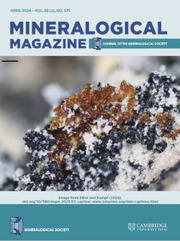
George Sheldrick in the early nineties at the University of Göttingen (image courtesy of Dr. S. Freitag-Pohl)
Professor George Michael Sheldrick FRS (17 November 1942 – 20 February 2025) passed away on 20 February 2025 (Universität Göttingen, 2025). He studied Natural Sciences at the University of Cambridge, earning his BA in 1963 and PhD under E. A. V. Ebsworth in 1966, and served as University Demonstrator and Lecturer at Jesus College from 1966 to 1978 (ChemistryViews, 2012). In 1978 he moved to the University of Göttingen as Professor of Structural Chemistry, holding that chair until his retirement in March 2011, after which he was appointed Niedersachsen Professor (Emeritus) and continued active research collaborations (ChemistryViews, 2012; Universität Göttingen, 2025). While at Göttingen he co-led the International Research Training Group “Metal Sites in Biomolecules: Structures, Regulation and Mechanisms” (Universität Göttingen, 2025).
Sheldrick’s most enduring legacy is the SHELX suite of programs for crystal-structure solution and refinement. First released in the 1970s for small-molecule analysis and later extended to macromolecular methods via direct, Patterson and dual-space techniques, SHELX underpins modern structure determination ranging from mineral and structural chemistry to macromolecular crystallography. His landmark paper, “A Short History of SHELX” (Sheldrick, Reference Sheldrick2008), is credited with elevating Acta Crystallographica Section A to an impact factor that surpassed Nature and Science in 2010 (Sheldrick Reference Sheldrick2008; ECA admin, 2025). This publication currently ranks as the 5th most cited paper published this century (https://www.nature.com/articles/d41586-025-01125-9)
Beyond SHELX, he developed essential data-processing software for Bruker AXS X-ray detectors, streamlining workflows for crystallographers worldwide (International Union of Crystallography, Reference George2025). At his passing, his work had amassed over 284 000 citations and he held an h-index of 113—metrics that attest to his extraordinary influence on structural science (ACGPubs, 2025). Over 2021–2025, his 2008 SHELX paper appeared in Mineralogical Magazine in around fifty single-crystal and new mineral papers (Google Scholar, 2025).
In recognition of his contributions to structural mineralogy, the sodium-calcium-fluorocarbonate mineral sheldrickite, NaCa₃(CO₃)₂F₃·H₂O, from the Mont Saint-Hilaire alkaline complex in Quebec, was named in his honour (Grice et al., Reference Grice, Gault and van Velthuizen1997).
Throughout his career Sheldrick received many of crystallography’s highest honours: Meldola Medal (1970), Corday-Morgan Medal (1978), Gottfried-Wilhelm-Leibniz Prize (1988), Carl Hermann Medal (1999), Max Perutz Prize (2004), Gregori Aminoff Prize (2009) and IUCr Ewald Prize (2011). He was elected Fellow of the Royal Society in 2001, and in 2024 the European Crystallographic Association inaugurated the George M. Sheldrick Prize awarded to a non-tenured early career researcher representing his commitment to support the next generation crystallographers in his name (ACGPubs, 2025).
Esteemed for his analytical rigour, wry humour and dedicated mentorship, he supervised over one hundred doctoral theses in Cambridge and Göttingen (International Union of Crystallography, Reference George2025; ECA admin, 2025). He is mourned by his family, colleagues and the global crystallographic community.
Statement – written using the sources below and with contributions from Professor Ehmke Pohl, Durham University, UK

